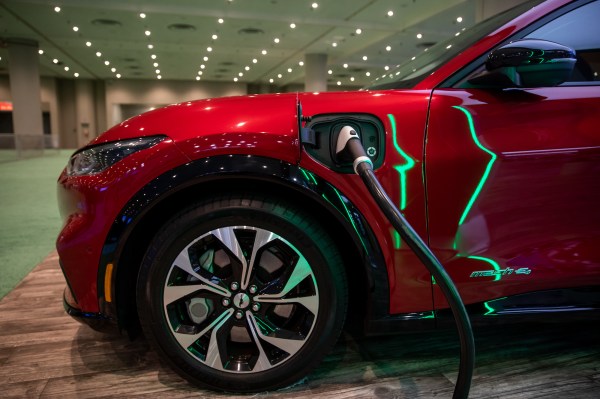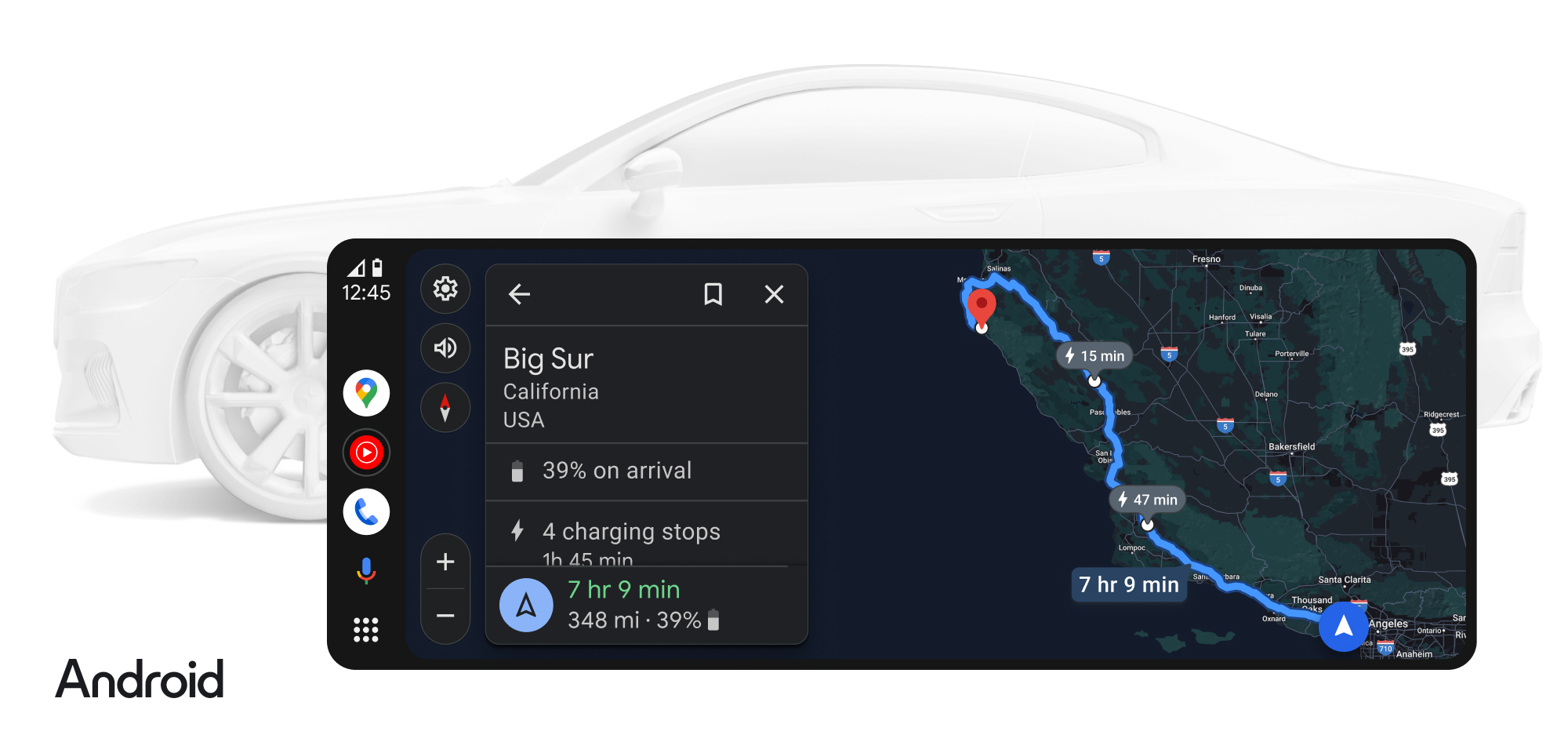Google announced Tuesday at CES 2024 a new feature for EV drivers that will track and display real-time battery information in Google Maps.
The feature is available in EVs with Android Auto, a secondary interface that runs on the user’s phone and wirelessly communicates and projects features like navigation, media and messaging from their Android-based smartphone to the vehicle display. From here, Android Auto shares real-time battery information with Google Maps, Guemmy Kim, director of Product and User Experience for Android for Cars wrote Tuesday in a blog post.
While most modern EVs give drivers information on their state of charge, the integration with navigation isn’t always available or clear. Android Auto bypasses whatever in-car navigation is being used and instead displays Google Maps. Once an EV driver plugs in a destination into Google Maps, the feature will give estimated battery level upon arrival, suggest charging stops along the way and share how long charging will take based on the vehicle.
The new Android Auto feature will roll out in the coming months on the Ford Mustang Mach-E and F-150 Lightning. More EV brands will follow in the coming months, according to Google.
Google built-in adds Chrome, Weather Channel
Google also added new trip planning capabilities, the Chrome browser and the Weather Channel app to Google built-in.
Google built-in an automotive services product that, unlike Android Auto, is actually embedded into the vehicle itself. Google built-in is offered in vehicles with an Android Automotive operating system — an increasingly common occurrence with automakers. Android Automotive OS is modeled after Google’s open source mobile operating system that runs on Linux. But instead of running smartphones, Google modified it so automakers could use it in their cars.
Google has offered an open source version of this OS to automakers for some time. But in recent years automakers have worked with the tech company to natively build in an Android OS that is embedded with all the Google apps and services, such as Google Assistant, Google Maps and the Google Play Store, as well as third-party apps like Spotify.
Polestar and Volvo were among the first automakers to have Google built-in. Nissan, Ford and Lincoln models equipped with Google built-in will also roll out this year and Porsche is expected to launch in the future.
The company said that starting today drivers of vehicles with Google built-in can send the trip they’ve planned on their smartphone using Google Maps directly to their car. The feature works for smartphones running on Android or even Apple’s iOS.
Google said that it has also added Chrome browser to select Polestar and Volvo cars in beta. The browser will be rolled out to other vehicles with Google built-in later this year.
The Chrome browser can’t be accessed when the vehicle is moving. Instead, it’s meant to be used when the vehicle is parked — and specifically for EVs while they’re charging.
Cars with Google built-in will also get, starting today, PBS KIDS, Crunchyroll and the Weather Channel app.
Correction: Google provided incorrect information about the timing of the EV battery status rollout in Ford vehicles. The article has been updated with the correct information.


